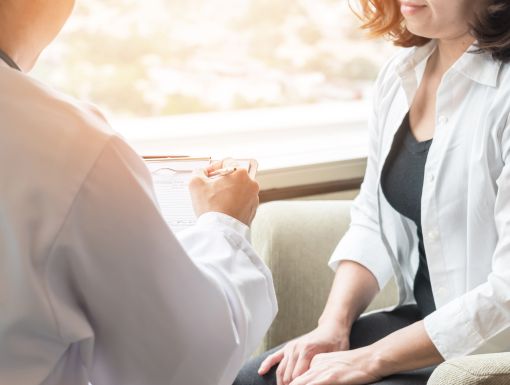
What is HPV? Here’s How the Gardasil Vaccine Can Save Lives
The human papillomavirus (HPV) presents a significant health concern. With nearly 14 million new infections each year in the United States alone, HPV is the most common sexually transmitted infection (STI). This virus can lead to severe consequences, including cancer. Thankfully, the HPV vaccine offers safe, effective protection that can significantly reduce the risk of HPV-related health problems.
By understanding HPV, the vaccine, and its importance, you can make informed decisions for yourself and your family. Below, we’ll explore everything you need to know about HPV and the power of vaccination.
What Is HPV?
HPV stands for human papillomavirus, a group of more than 200 related viruses that spread through skin-to-skin contact. This includes unprotected vaginal, anal or oral sex with someone carrying the virus. While many infections resolve on their own without causing health issues, some linger and lead to serious conditions like genital warts or cancer.
HPV can cause several types of cancer, including cervical cancer, cancer of the vulva, vagina, penis or anus, and certain head and neck cancers. Since HPV often does not show symptoms, it can progress for years, even decades.
The types of HPV that cause genital warts are not the same as the types that lead to cancer. However, determining who will develop complications remains unpredictable. This is why proactive prevention is vital.
How does the HPV vaccine work?
The HPV vaccine is a critical tool in the fight against cancers caused by this virus. It targets specific HPV strains, including those responsible for about 70% of cervical cancers and many types of other cancers.
The vaccine works by training your immune system to recognize and combat these strains before they can cause harm. While it does not protect against all HPV infections, it significantly lowers the likelihood of contracting high-risk strains linked to cancer.
The American Academy of Pediatrics recommends vaccinating pre-teens, both boys and girls, between the ages of 11 and 12. The vaccine is most effective when administered before exposure to the virus, which is why starting early is key.
Is the HPV vaccine only for girls and women?
No. HPV doesn’t discriminate; it affects males and females alike. Both boys and girls should receive the HPV vaccine, as the virus can cause cancer in everyone it infects. Vaccinating adolescents ensures they are protected before any potential exposure.
Is the HPV vaccine safe?
Yes. Multiple studies have confirmed that the HPV vaccine is both safe and effective. It contains a single protein from the virus, which means it cannot cause HPV infection or cancer. Like other vaccines, minor side effects such as redness at the injection site, dizziness, or nausea may occur. Rarely, fainting has been observed following vaccination, which is why healthcare professionals recommend staying seated for 15 minutes after receiving the shot.
While there have been isolated reports of serious conditions like Guillain-Barré syndrome, no scientific evidence links these conditions to the vaccine.
Does the HPV vaccine eliminate the need for Pap smears?
The HPV vaccine is an invaluable preventive measure, but it does not replace routine Pap smears. Pap smears detect abnormal cervical cells early, allowing for timely intervention. Since the vaccine doesn’t protect against all types of cervical cancer or treat existing HPV infections, regular screenings remain essential for women.
Why Is early HPV vaccination important?
Vaccines work best when they are given before exposure to a virus. This is especially true for the HPV vaccine. Children as young as 9 years old can receive the vaccine, and it is most commonly recommended for 11- to 12-year-olds.
Administering the vaccine early helps ensure protection during adolescence and adulthood, when exposure to HPV becomes more likely. Importantly, younger adolescents (ages 9–14) typically require only two doses, while those starting vaccination later may need three.
What are other strategies to protect against HPV?
While the HPV vaccine is a vital protective measure, there are additional ways to reduce the risk of HPV infection:
- Condom use: Condoms offer partial protection against HPV. Though not foolproof, they reduce the likelihood of infection and are essential for preventing other STIs.
- Routine screenings: Women aged 21–65 should schedule regular cervical cancer screenings, such as Pap smears, to detect abnormalities early.
- Open communication: Talking to your child about HPV and safe behaviors can empower them to make informed decisions about their health.
It’s important to remember that abstinence from sexual activity is the only guaranteed way to prevent HPV and other sexually transmitted infections.
How Is the HPV vaccine administered?
Ochsner Health administers the 9-valent HPV vaccine (Gardasil 9), which is approved for use in males and females. It protects against multiple high-risk HPV strains, including those causing genital warts.
The vaccine schedule varies by age:
- Children ages 9–14 typically receive two doses, spaced six to 12 months apart.
- Those beginning the vaccine series later, from ages 15–45, require three doses.
The vaccine is injected into the muscle of the upper arm or thigh by a healthcare professional. To ensure safety, individuals are monitored for 15 minutes after each dose.
Your pediatrician or healthcare provider can guide you on the appropriate timing for vaccination.
Conclusion
HPV-related cancers represent a preventable tragedy. The HPV vaccine provides a powerful opportunity to protect your child’s health, reduce the risk of cancer, and build a healthier future for all.
If you have any questions or concerns about the HPV vaccine, talk to your doctor or your child’s pediatrician. Together, we can empower families and communities to make decisions that safeguard their well-being.



